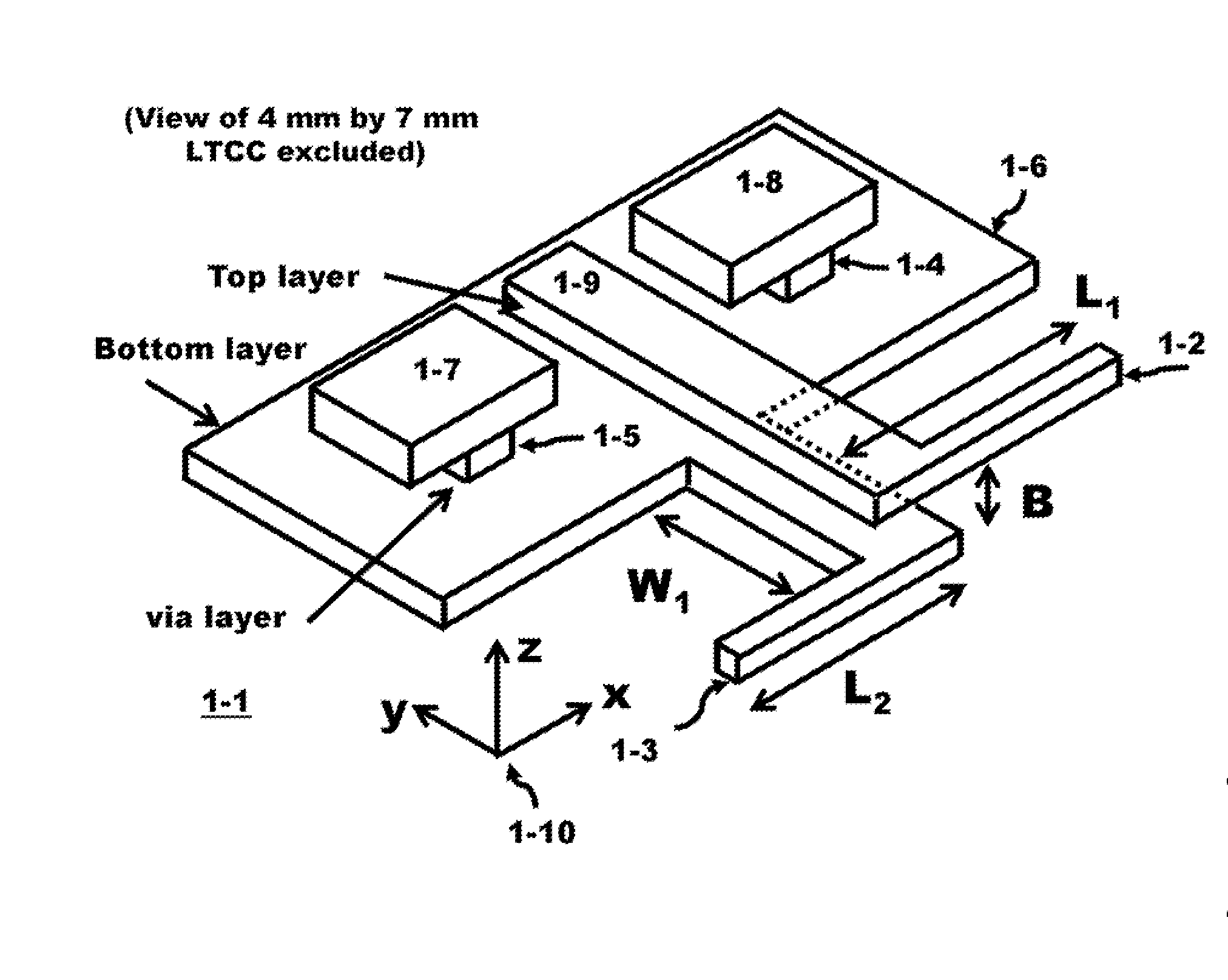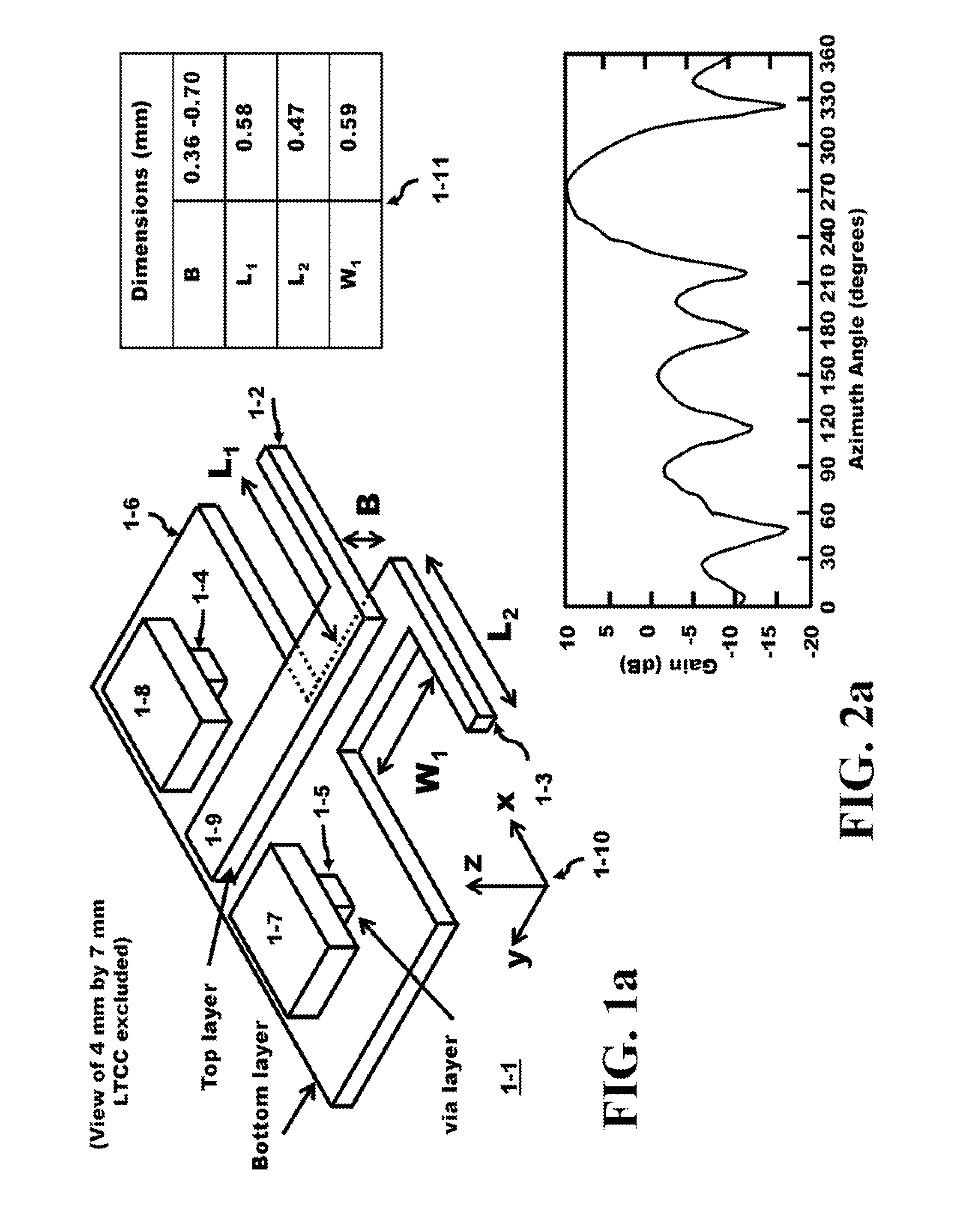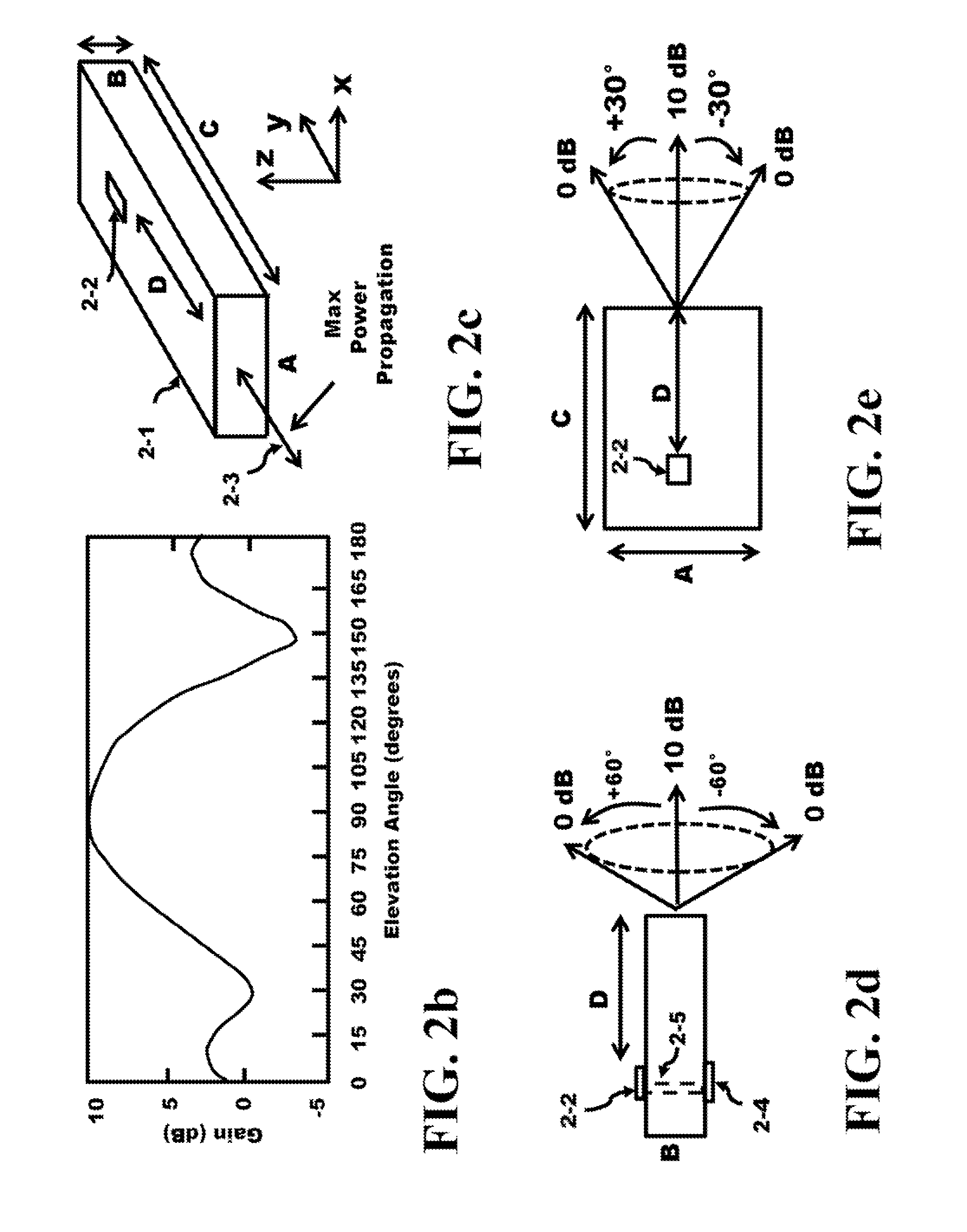Method and Apparatus for a 60 GHz Endfire Antenna
a technology of endfire antenna and endfire antenna, which is applied in the direction of antennas, antenna feed intermediates, semiconductor devices, etc., can solve the problems of difficult thickness requirements of substrates, difficult to support system weight considerations, and difficulty in scaling integrated antennas, etc., to achieve the effect of saving power
- Summary
- Abstract
- Description
- Claims
- Application Information
AI Technical Summary
Benefits of technology
Problems solved by technology
Method used
Image
Examples
Embodiment Construction
[0070]FIG. 1a illustrates the geometry 1-1 of a microstrip-line fed dipole of a split dipole between a top and bottom layers of metallization on an LTCC substrate. The top layer consists of the metal trace 1-9 and the first half of the dipole 1-2 which has a length L1. In addition more metal pads 1-7 and 1-8 are located in the top layer. The pads 1-7, 1-8 and the end of 1-9 are the locations where the top layer is solder bumped to a chip. The bottom layer is shown as 1-6 which is the reflector and a length of wire that is W1 units long connected to the second half of the dipole 1-3 which has a length L2. The length of the microstrip-lines (from dipole to the feed point) serves as impedance transformer. The Cartesian coordinate system is illustrated in 1-10 is provided to present the direction of propagation of the antenna. The reflector (or ground patch) and spacing to the dipole are chosen to minimize the radiation in the y-direction or 90° measured with respect to the x-axis. The ...
PUM
 Login to View More
Login to View More Abstract
Description
Claims
Application Information
 Login to View More
Login to View More - R&D
- Intellectual Property
- Life Sciences
- Materials
- Tech Scout
- Unparalleled Data Quality
- Higher Quality Content
- 60% Fewer Hallucinations
Browse by: Latest US Patents, China's latest patents, Technical Efficacy Thesaurus, Application Domain, Technology Topic, Popular Technical Reports.
© 2025 PatSnap. All rights reserved.Legal|Privacy policy|Modern Slavery Act Transparency Statement|Sitemap|About US| Contact US: help@patsnap.com



